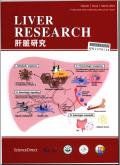Mechanosensitive ion channel-related genes in hepatocellular carcinoma: Unraveling prognostic genes and their roles in drug resistance and immune modulation
IF 2.1
Q2 Medicine
引用次数: 0
Abstract
Background and aims
Hepatocellular carcinoma (HCC) is a leading cause of cancer-related mortality worldwide, and its etiology involves a complex interplay of genetic and environmental factors. Despite advancements in our understanding of HCC biology and the development of novel therapeutic strategies, the molecular mechanisms underlying its onset, progression, and resistance to therapy remain largely vague. This study aimed to investigate the role of mechanosensitive ion channel-related genes (MICRGs) in HCC, focusing on their potential as prognostic biomarkers and their involvement in immune modulation and drug resistance.
Methods
A comprehensive analysis was conducted using The Cancer Genome Atlas database to identify MICRGs that are upregulated in HCC. Gene expression profiling, bioinformatics tools, and functional experiments were employed to elucidate the role of these channels. In addition, protein–protein interaction (PPI) network analyses and enrichment analyses were performed to explore the biological significance of these genes. An immune cell infiltration analysis was also conducted to understand MICRG-related immune landscape. Single-cell RNA sequencing (scRNA-seq) data were utilized to identify MICRGs in different cell types within the HCC tissue. Deep-learning neural network analysis across patient cohorts was conducted to identify genes associated with sorafenib resistance. Knockdown experiments, cell viability assays, and apoptosis assays on HCC cell lines were performed to examine the role of Piezo-type mechanosensitive ion channel component 1 (PIEZO1) in sorafenib resistance.
Results
The analysis identified a subset of MICRGs, including PIEZO1, that were significantly upregulated in HCC and associated with poor prognosis. The PPI network analysis revealed complex interactions among these genes. Gene Ontology and Kyoto Encyclopedia of Genes and Genomes pathway enrichment analyses proposed the involvement of these genes in calcium signaling pathways. Immune cell infiltration analysis demonstrated distinct associations between MICRGs and various immune subpopulations, highlighting their potential roles in immune modulation. scRNA-seq data indicated the upregulation of MICRGs in various cell types in HCC tissues, particularly in endothelial cells and tumor-associated macrophages. Deep-learning neural network analysis across different patient cohorts identified PIEZO1 as a crucial regulator of sorafenib resistance in HCC, which was further validated by functional assays on HCC cell lines.
Conclusions
This study provides evidence that MICRGs, particularly PIEZO1, take on crucial roles in HCC progression and drug resistance. The upregulation of PIEZO1 in HCC cells is associated with poor prognosis and resistance to sorafenib. These findings indicate that PIEZO1 could serve as a potential therapeutic target for overcoming drug resistance and a prognostic biomarker in HCC. Future studies should focus on validating these findings in larger patient cohorts and exploring the functional implications of targeting PIEZO1 in preclinical models.
肝细胞癌中机械敏感离子通道相关基因:揭示预后基因及其在耐药和免疫调节中的作用
背景和目的肝细胞癌(HCC)是全球癌症相关死亡的主要原因,其病因涉及遗传和环境因素的复杂相互作用。尽管我们对HCC生物学的理解有了进步,新的治疗策略也有了发展,但其发病、进展和耐药的分子机制仍然很模糊。本研究旨在探讨机械敏感离子通道相关基因(MICRGs)在HCC中的作用,重点关注它们作为预后生物标志物的潜力以及它们在免疫调节和耐药性中的参与。方法利用The Cancer Genome Atlas数据库进行综合分析,确定HCC中上调的MICRGs。基因表达谱、生物信息学工具和功能实验被用来阐明这些通道的作用。此外,我们还进行了蛋白-蛋白相互作用(PPI)网络分析和富集分析,以探索这些基因的生物学意义。免疫细胞浸润分析也被用来了解micrg相关的免疫景观。单细胞RNA测序(scRNA-seq)数据用于鉴定HCC组织中不同细胞类型中的MICRGs。对患者队列进行深度学习神经网络分析,以确定与索拉非尼耐药相关的基因。通过敲低实验、细胞活力测定和细胞凋亡测定,研究压电型机械敏感离子通道成分1 (PIEZO1)在索拉非尼耐药中的作用。结果分析发现,包括PIEZO1在内的MICRGs亚群在HCC中显著上调,并与预后不良相关。PPI网络分析揭示了这些基因之间复杂的相互作用。基因本体和京都基因与基因组百科全书路径富集分析提出这些基因参与钙信号通路。免疫细胞浸润分析显示,MICRGs与各种免疫亚群之间存在明显的关联,突出了它们在免疫调节中的潜在作用。scRNA-seq数据显示,HCC组织中各种细胞类型中MICRGs表达上调,尤其是内皮细胞和肿瘤相关巨噬细胞。对不同患者队列的深度学习神经网络分析发现,PIEZO1是HCC中索拉非尼耐药的关键调节因子,并通过HCC细胞系的功能分析进一步验证了这一点。本研究提供证据表明,MICRGs,特别是PIEZO1,在HCC的进展和耐药中起着至关重要的作用。HCC细胞中PIEZO1的上调与预后不良和索拉非尼耐药有关。这些发现表明,PIEZO1可以作为HCC中克服耐药的潜在治疗靶点和预后生物标志物。未来的研究应侧重于在更大的患者群体中验证这些发现,并在临床前模型中探索靶向PIEZO1的功能意义。
本文章由计算机程序翻译,如有差异,请以英文原文为准。
求助全文
约1分钟内获得全文
求助全文

 求助内容:
求助内容: 应助结果提醒方式:
应助结果提醒方式:


